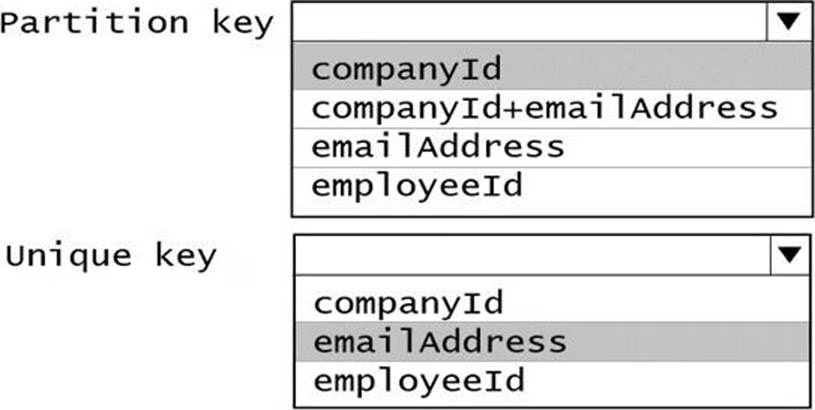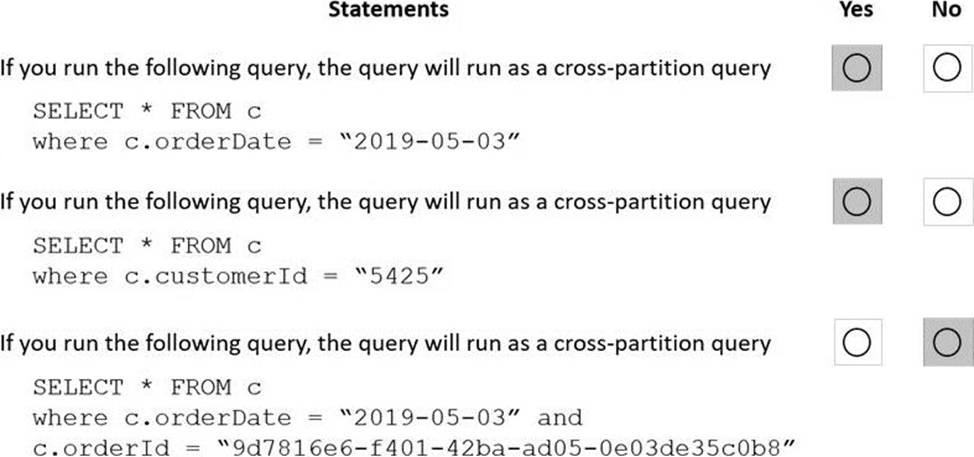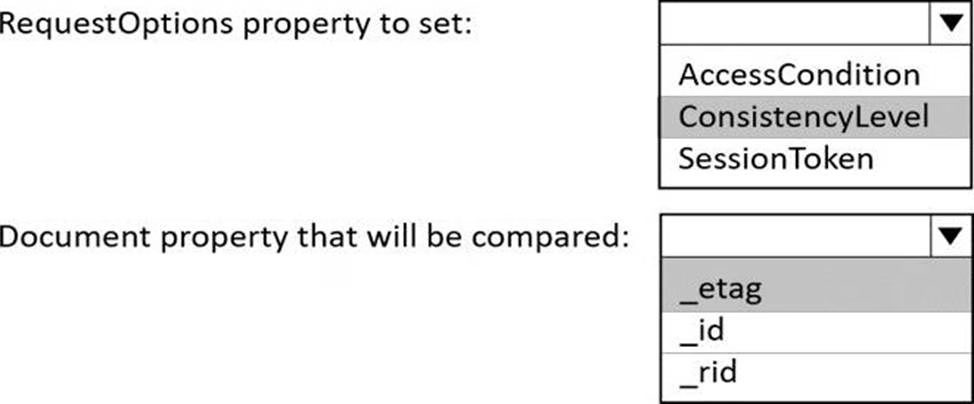Microsoft DP-420 Designing and Implementing Cloud-Native Applications Using Microsoft Azure Cosmos DB Online Training
Microsoft DP-420 Online Training
The questions for DP-420 were last updated at Apr 02,2025.
- Exam Code: DP-420
- Exam Name: Designing and Implementing Cloud-Native Applications Using Microsoft Azure Cosmos DB
- Certification Provider: Microsoft
- Latest update: Apr 02,2025
HOTSPOT
You have an Azure Cosmos DB Core (SQL) API account named account1 that has the disableKeyBasedMetadataWriteAccess property enabled.
You are developing an app named App1 that will be used by a user named DevUser1 to create containers in account1. DevUser1 has a non-privileged user account in the Azure Active Directory (Azure AD) tenant.
You need to ensure that DevUser1 can use App1 to create containers in account1.
What should you do? To answer, select the appropriate options in the answer area. NOTE: Each correct selection is worth one point.

HOTSPOT
You have an Azure Cosmos DB Core (SQL) account that has a single write region in West Europe. You run the following Azure CLI script.

For each of the following statements, select Yes if the statement is true. Otherwise, select No. NOTE: Each correct selection is worth one point.

You are developing an application that will use an Azure Cosmos DB Core (SQL) API account as a data source.
You need to create a report that displays the top five most ordered fruits as shown in the following table.
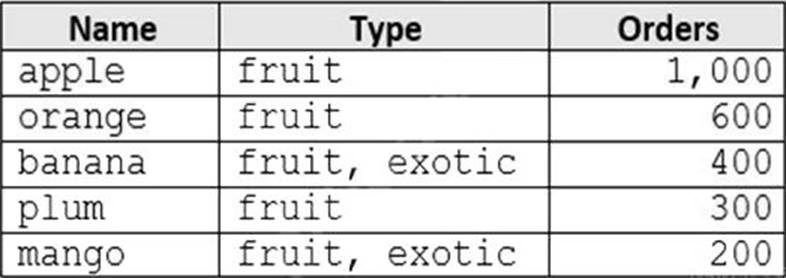
A collection that contains aggregated data already exists. The following is a sample document:
{
"name": "apple",
"type": ["fruit", "exotic"],
"orders": 10000
}
Which two queries can you use to retrieve data for the report? Each correct answer presents a complete solution. NOTE: Each correct selection is worth one point.
A)

B)

C)

D)

- A . Option A
- B . Option B
- C . Option C
- D . Option D
HOTSPOT
You have a database in an Azure Cosmos DB Core (SQL) API account.
You plan to create a container that will store employee data for 5,000 small businesses. Each business will have up to 25 employees. Each employee item will have an email Address value. You need to ensure that the email Address value for each employee within the same company is unique.
To what should you set the partition key and the unique key? To answer, select the appropriate options in the answer area. NOTE: Each correct selection is worth one point.
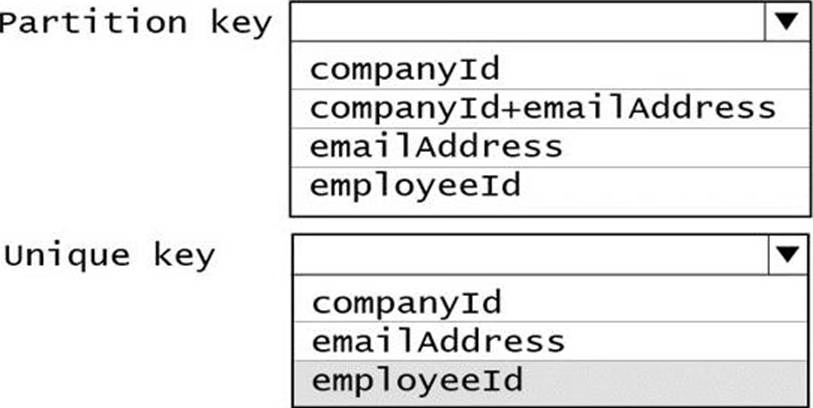
HOTSPOT
You have a container named container1 in an Azure Cosmos DB Core (SQL) API account. The container1 container has 120 GB of data.
The following is a sample of a document in container1.

The orderId property is used as the partition key.
For each of the following statements, select Yes if the statement is true. Otherwise, select No. NOTE: Each correct selection is worth one point.
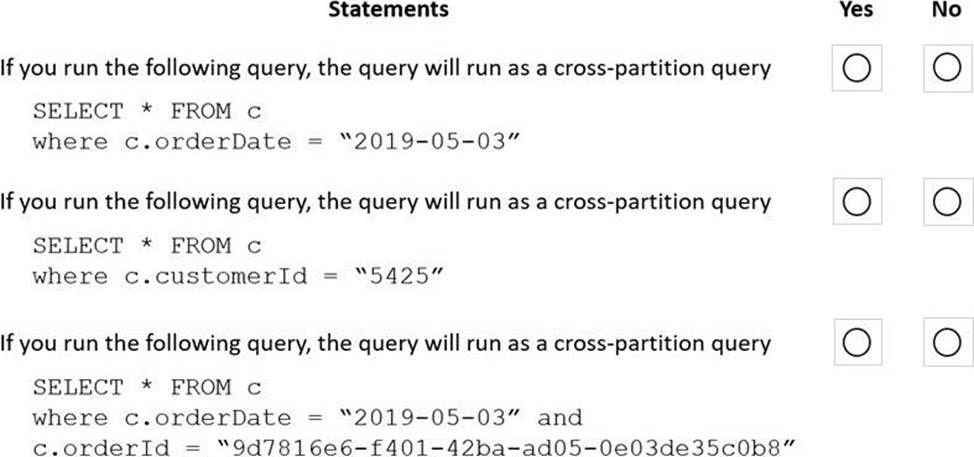
You are designing an Azure Cosmos DB Core (SQL) API solution to store data from IoT devices. Writes from the devices will be occur every second.
The following is a sample of the data.
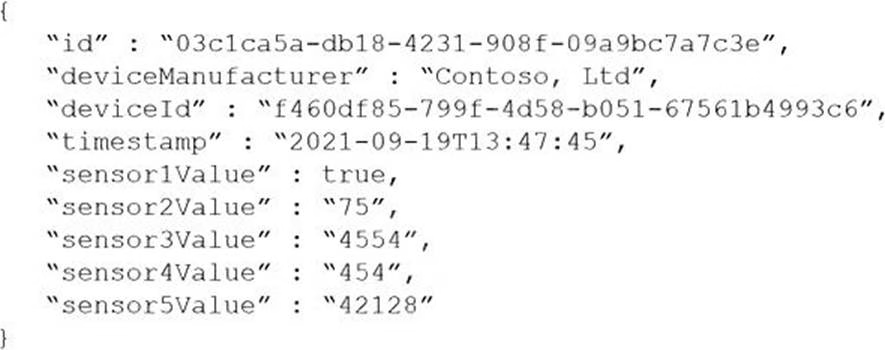
You need to select a partition key that meets the following requirements for writes:
– Minimizes the partition skew
– Avoids capacity limits
– Avoids hot partitions
What should you do?
- A . Use timestamp as the partition key.
- B . Create a new synthetic key that contains deviceId and sensor1Value.
- C . Create a new synthetic key that contains deviceId and deviceManufacturer.
- D . Create a new synthetic key that contains deviceId and a random number.
You maintain a relational database for a book publisher.
The database contains the following tables.
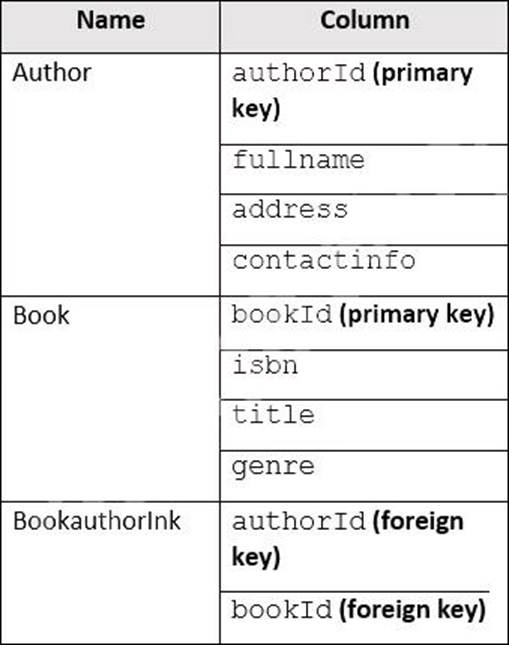
The most common query lists the books for a given authorId.
You need to develop a non-relational data model for Azure Cosmos DB Core (SQL) API that will replace the relational database. The solution must minimize latency and read operation costs.
What should you include in the solution?
- A . Create a container for Author and a container for Book. In each Author document, embed booked for each book by the author. In each Book document embed author of each author.
- B . Create Author, Book, and Bookauthorlnk documents in the same container.
- C . Create a container that contains a document for each Author and a document for each Book. In each Book document, embed authorId.
- D . Create a container for Author and a container for Book. In each Author document and Book document embed the data from Bookauthorlnk.
You have an Azure Cosmos DB Core (SQL) API account.
You run the following query against a container in the account.
SELECT
IS_NUMBER("1234") AS A,
IS_NUMBER(1234) AS B,
IS_NUMBER({prop: 1234}) AS C
What is the output of the query?
- A . [{"A": false, "B": true, "C": false}]
- B . [{"A": true, "B": false, "C": true}]
- C . [{"A": true, "B": true, "C": false}]
- D . [{"A": true, "B": true, "C": true}]
You need to implement a trigger in Azure Cosmos DB Core (SQL) API that will run before an item is inserted into a container.
Which two actions should you perform to ensure that the trigger runs? Each correct answer presents part of the solution. NOTE: Each correct selection is worth one point.
- A . Append pre to the name of the JavaScript function trigger.
- B . For each create request, set the access condition in RequestOptions.
- C . Register the trigger as a pre-trigger.
- D . For each create request, set the consistency level to session in RequestOptions.
- E . For each create request, set the trigger name in RequestOptions.
HOTSPOT
You have a container in an Azure Cosmos DB Core (SQL) API account.
You need to use the Azure Cosmos DB SDK to replace a document by using optimistic concurrency.
What should you include in the code? To answer, select the appropriate options in the answer area. NOTE: Each correct selection is worth one point.
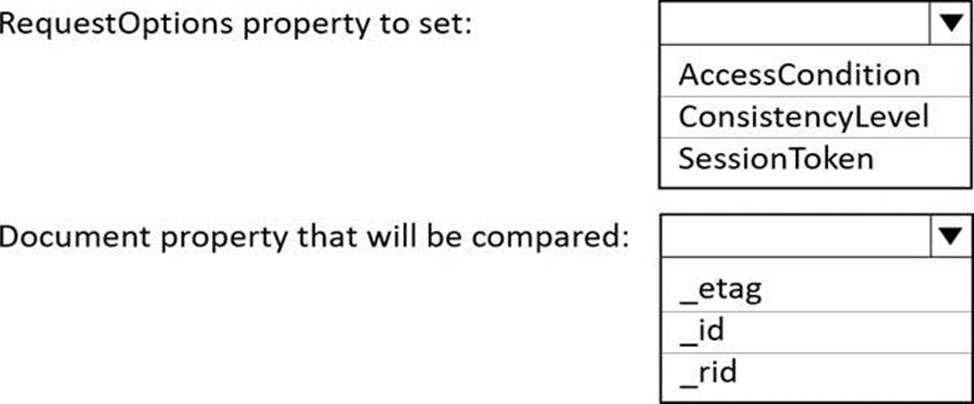
Latest DP-420 Dumps Valid Version with 51 Q&As
Latest And Valid Q&A | Instant Download | Once Fail, Full Refund



